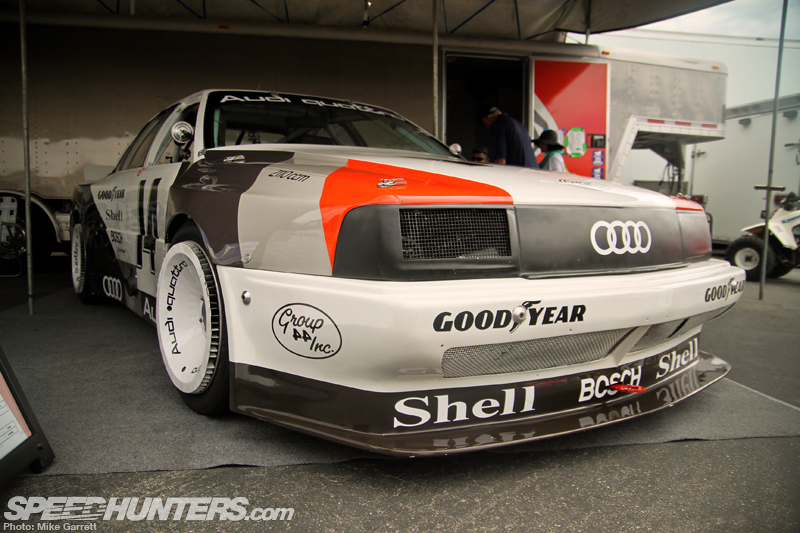
Now that I’ve given you guys a solid taste of the machinery that gathered last weekend at Laguna Seca for the Rolex Monterey Motorsports Reunion, I’d like to continue on with a selection of spotlights from the event. With hundreds of great racing cars to choose from, this was not an easy task by any stretch – but I’ve rounded up six vehicles here that helped define the event for me.
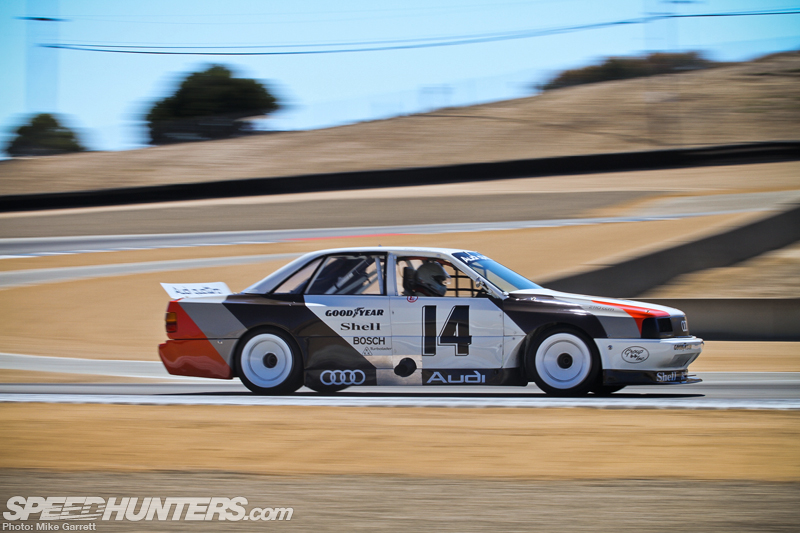
Let’s begin with one of the most outright badass cars to take to the track the entire weekend – the 1988 Audi 200 Quattro Trans Am racer. This is a car that I’ve heard so much about, and finally getting the chance to see it not just in person, but being driven at a full clip on the track was unforgettable.
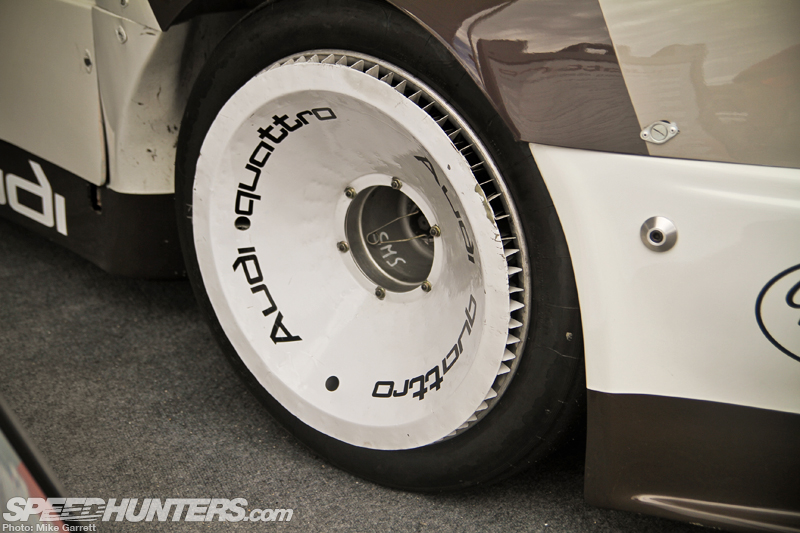
While you could easily dedicate an entire post to the historical significance of these groundbreaking AWD machines, I will just say that it’s every bit as great in person. With those ridiculous wide body panels, and aero fin-covered wheels the car still manages to look ahead of its time, even 25 years on.
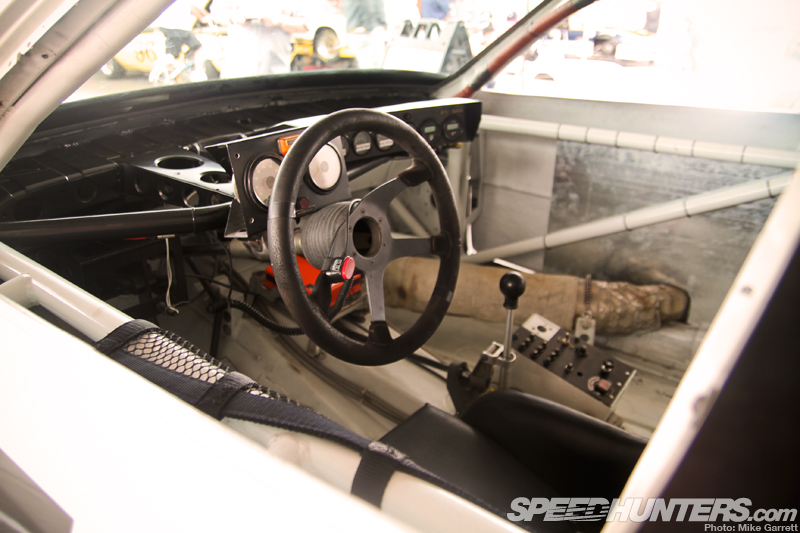
Surprisingly though, for all the technology that was packed into this car, the interior is about as bare bones as it gets.
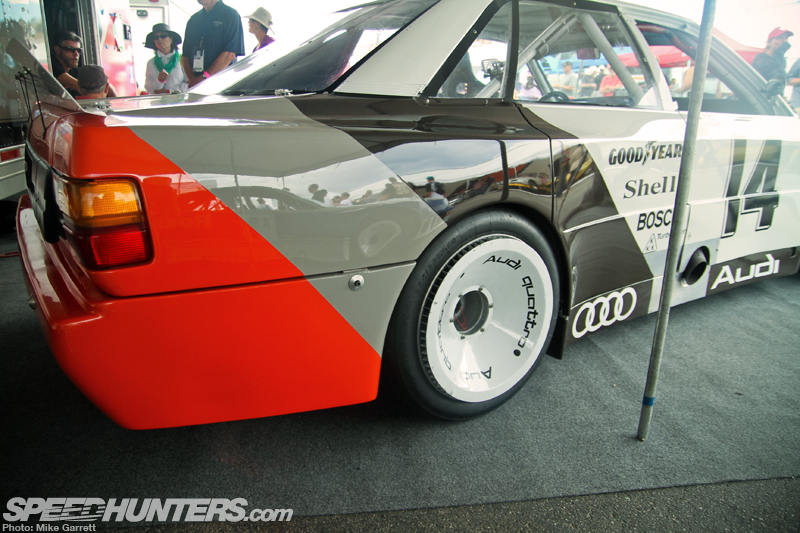
And as impressive as it is while sitting still, nothing compares to seeing this thing out on the track. Just as it did during its time, the Quattro was out there running right with its V8-powered rivals, shooting flames and making glorious music from its 510-horsepower turbocharged five cylinder. Seriously, go check out some videos if you’ve never seen this beast in action.
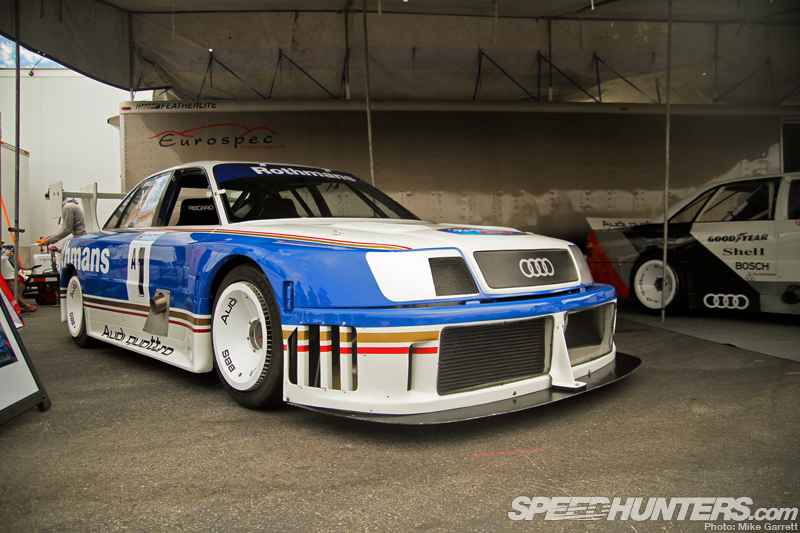
Sitting just feet from the Trans Am Quattro, was another equally badass Audi built from the same racing DNA – an S4 GTO that competed in South Africa’s Wesbank Modified Championship during the early 1990s.
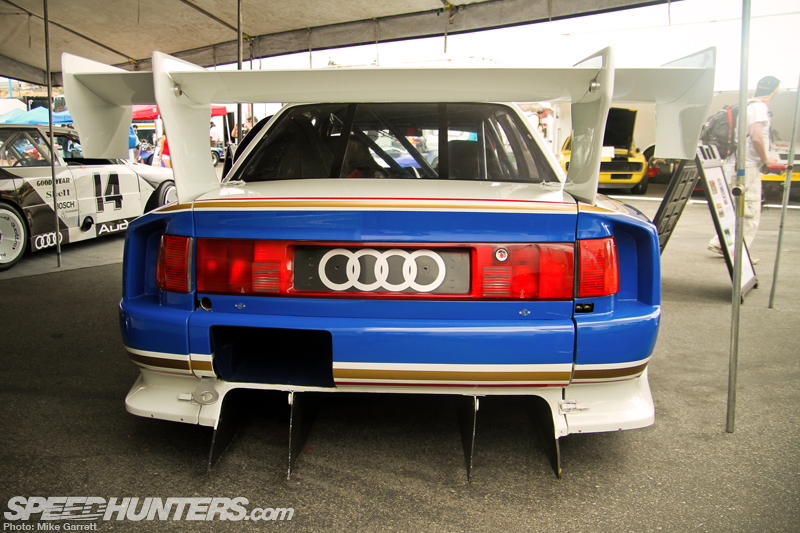
This machine began life as an IMSA GTO Audi 90 in the states before being acquired by Audi Sport South Africa in 1993. Because the Audi 90 wasn’t offered in South Africa, Audi Sport South Africa designed all new bodywork for the car based on the C4 Audi S4, with running gear and chassis carried over from the IMSA GTO machine.
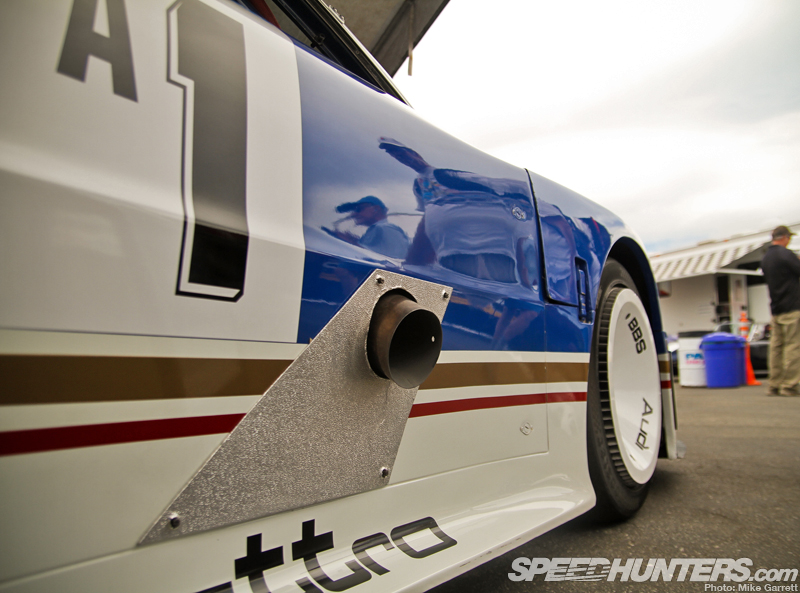
It was also great to see the car wearing an iconic Rothmans racing livery, which is most commonly associated with Porsche but looks absolutely fantastic on this wide body sedan.
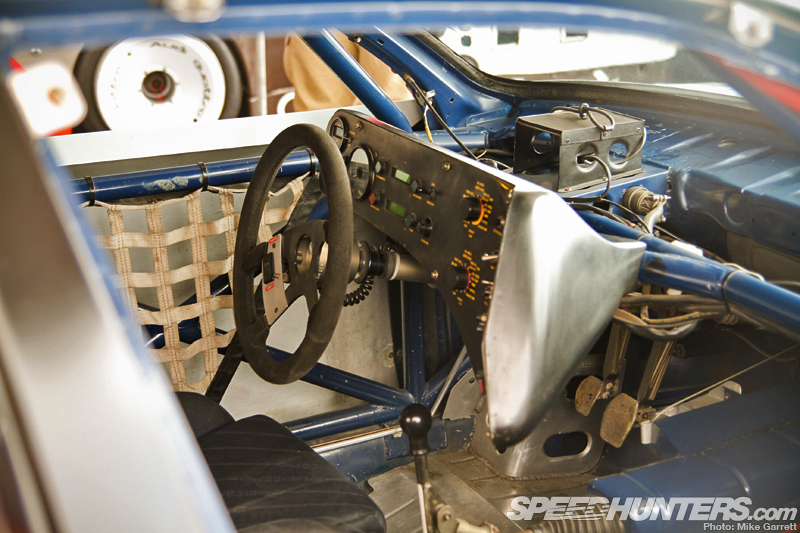
The interior meanwhile, is just as spartan as the one in the 200 Quattro.
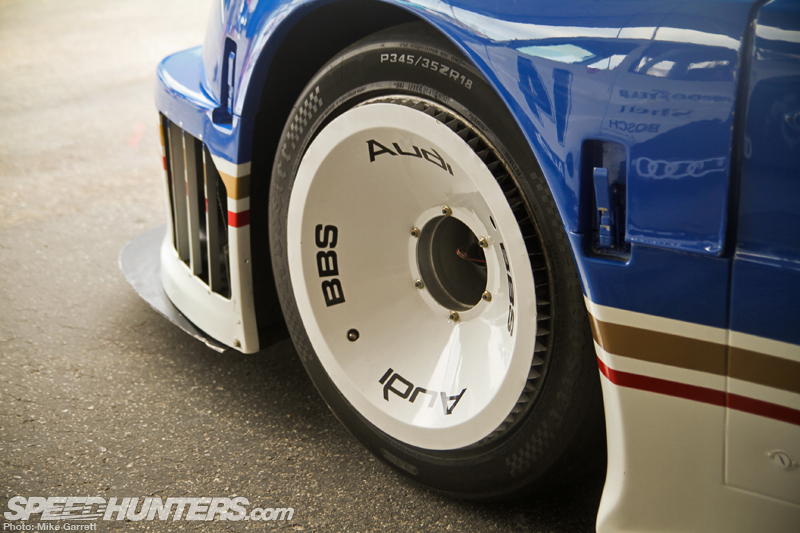
While both of these Audis are state of the art modern machines compared to most of the field at the Rolex Historics, it’s great to see that the event has a place for these modern classics.
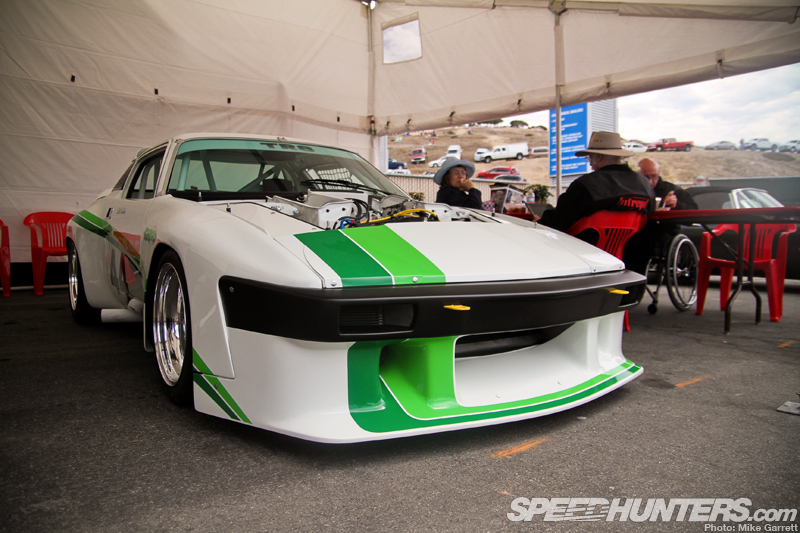
One of the more unusual race cars I came across the entire weekend was this Triumph TR8 Trans Am machine from 1980.
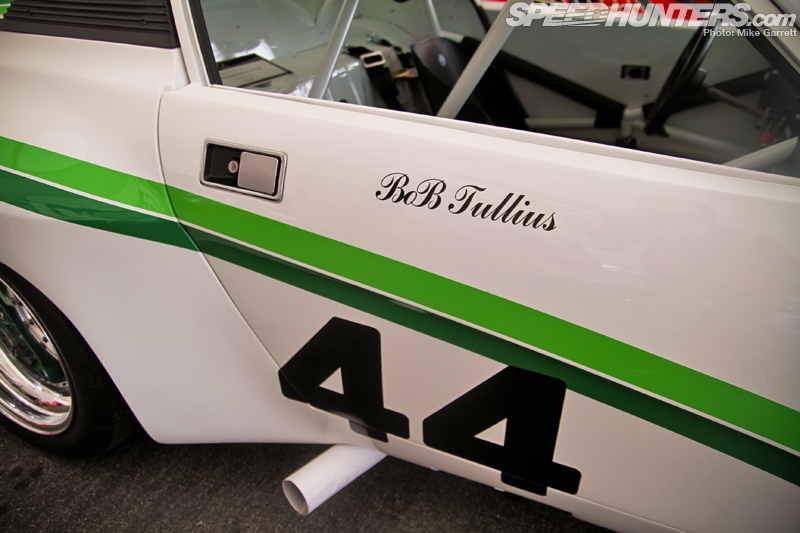
The car was a product of Bob Tullius famous Group 44 Racing outfit, which although known primarily for its work with Jaguar also built race cars for British Leyland’s Triumph brand.
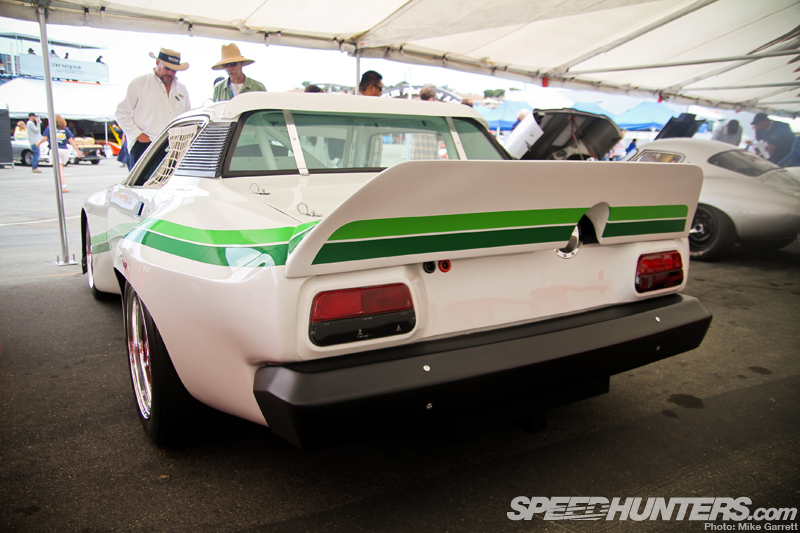
Rather than using the roadster body that most of the production TR8s were built out of, Group 44 used the more rigid coupe platform for its race project.
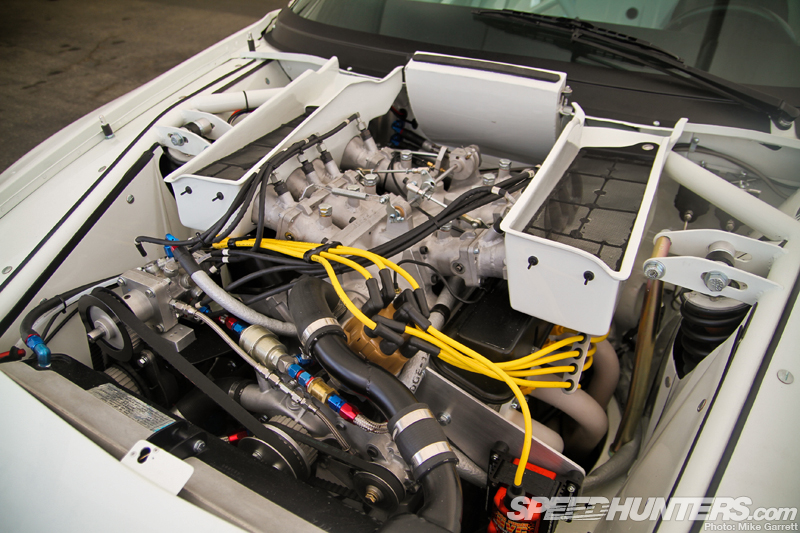
The car is powered by a modified version of the Rover all-aluminum pushrod V8, which made a very impressive-for-its-time 360 horsepower.
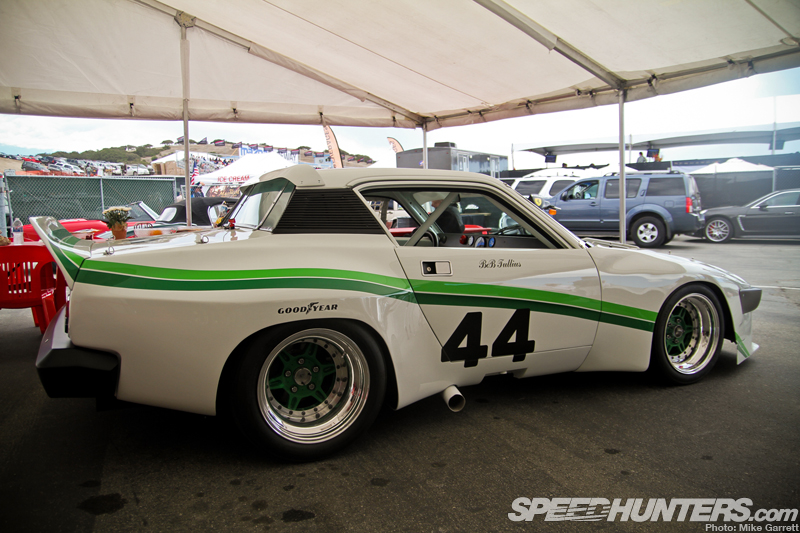
In fact, with the light weight of the TR8’s chassis, the Group 44 cars were so dominant that the SCCA imposed severe weight restrictions on the team. This caused Tullius and company to leave the SCCA altogether in favor of IMSA’s GT series, where they also found great success. This is all history I was unfamiliar with until I stumbled across this car in the Laguna Seca paddock.
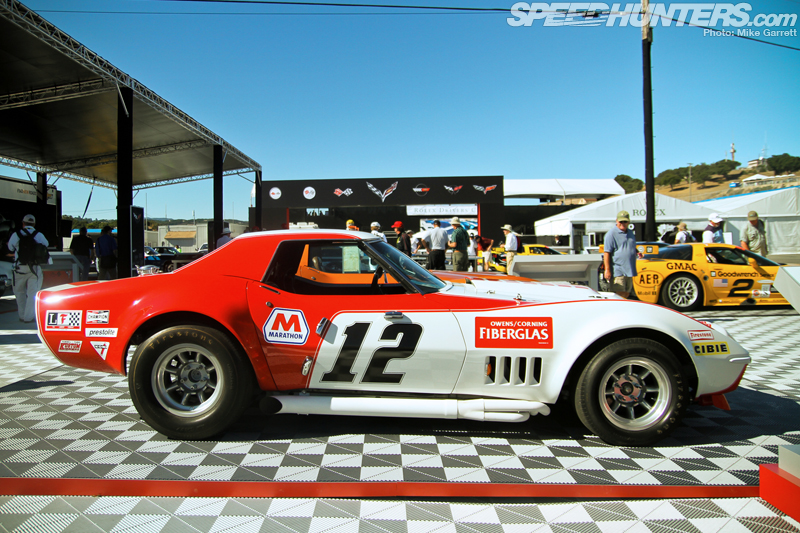
With the Corvette being the featured marque at this year’s Rolex Historics, it was only fitting that I’d include one in my spotlight selection. While the track was packed with ‘Vette race cars of all types, one that grabbed my attention was this 968 Owens/Corning C3 L-88 in GM’s display.
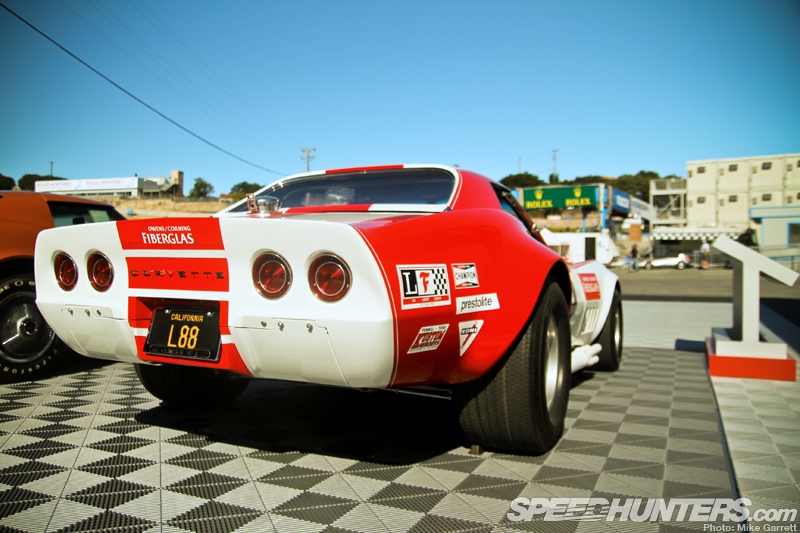
This car is considered the most victorious Corvette in history, with tremendous success in both SCCA National and FIA GT racing in the late ’60s and early ’70s. This car won 12 of 22 SCCA/FIA national events between 1969 and 1971, with its sister car taking the other 10 for a perfect team record.
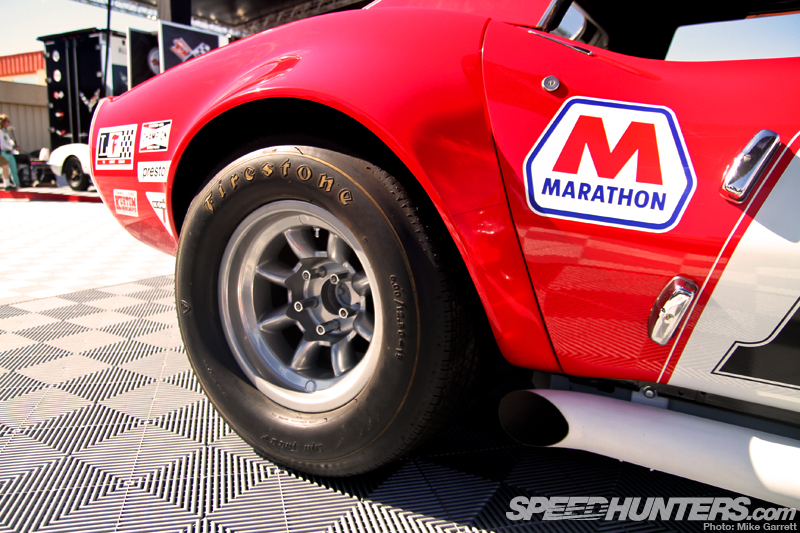
But more than that, the car encompasses everything that was great about Corvette race cars from this era – the enormous tires, the flared fenders and those tough looking side pipes, all of which would be replicated on many a street car.
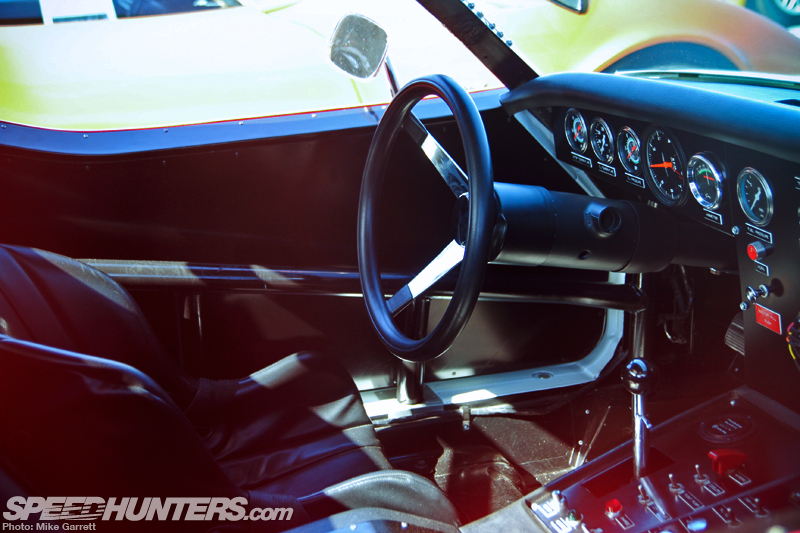
The ‘Vette is powered of course by a 685 horsepower 427 mated to a Muncie Rock Crusher 4-speed transmission, and needless to say this historic car has been meticulously restored to its original competition spec.
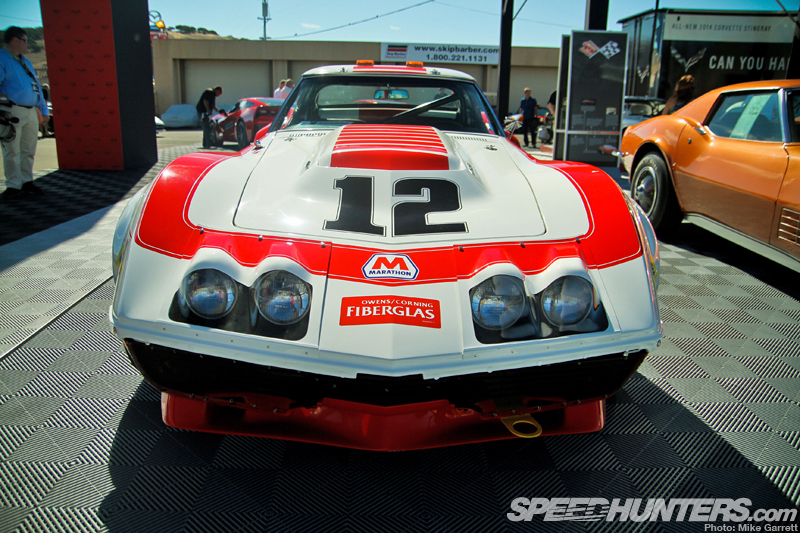
Earlier this year, the car was purchased at auction by famed NASCAR team owner and Corvette collector Rick Hendrick for a cool million bucks. Not bad.
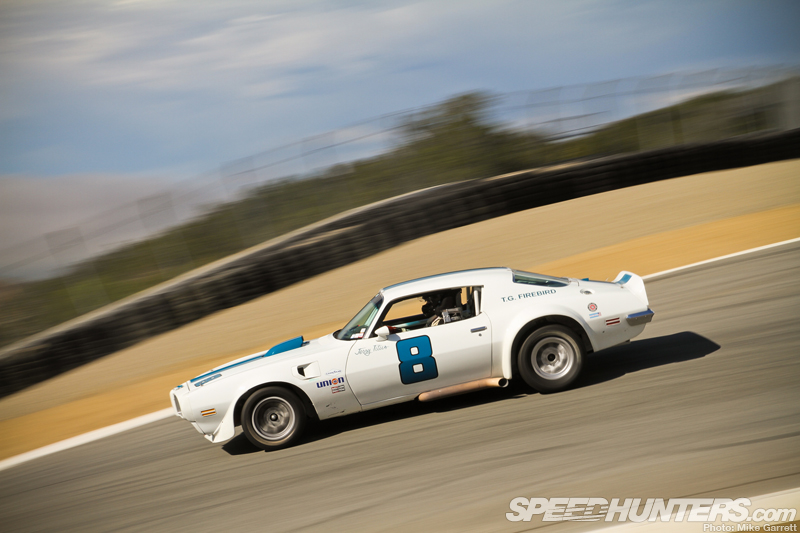
Next up, we have an entry from the packed field of vintage SCCA Trans Am cars – a 1970 Pontiac Firebird originally built and campaigned by Jerry Titus.
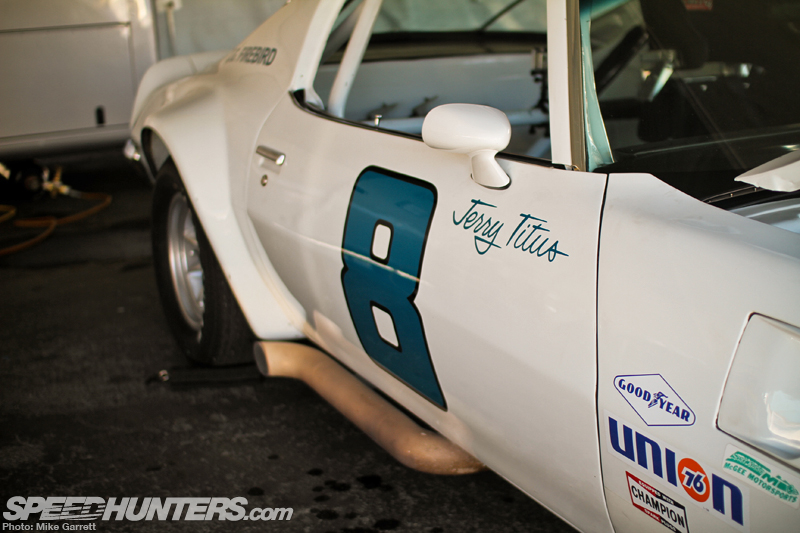
Despite the fact that it took its name from the series, the Firebird/Trans Am never achieved a whole lot success on the track – but that doesn’t stop the Titus-built Firebird from being one of the more interesting cars of the group.
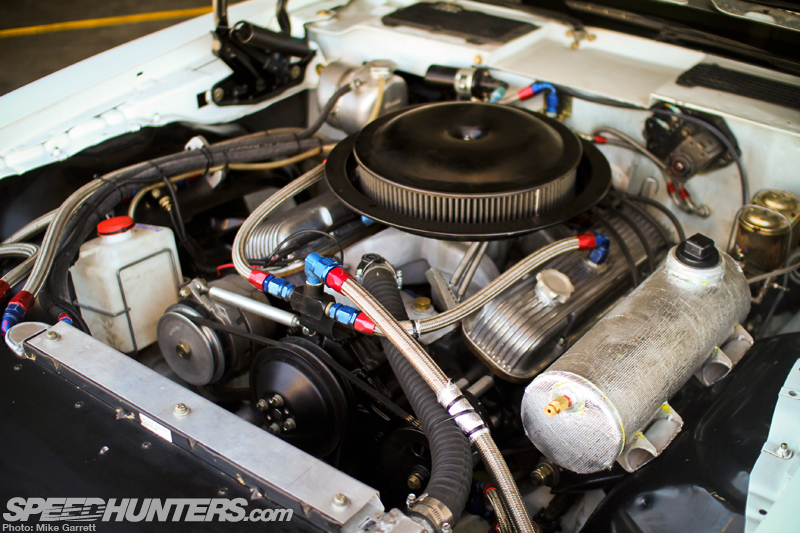
A big reason for the car’s lack of wins was due to a lack of much factory support. Because Pontiac didn’t have a small block engine that would meet Trans Am’s cubic inch limit, the car ran a Pontiac 400 that was destroked to 305 cubic inches and fitted with a single four barrel carburetor. Even with its decreased displacement, the car still made somewhere in the neighborhood of 450 horsepower.
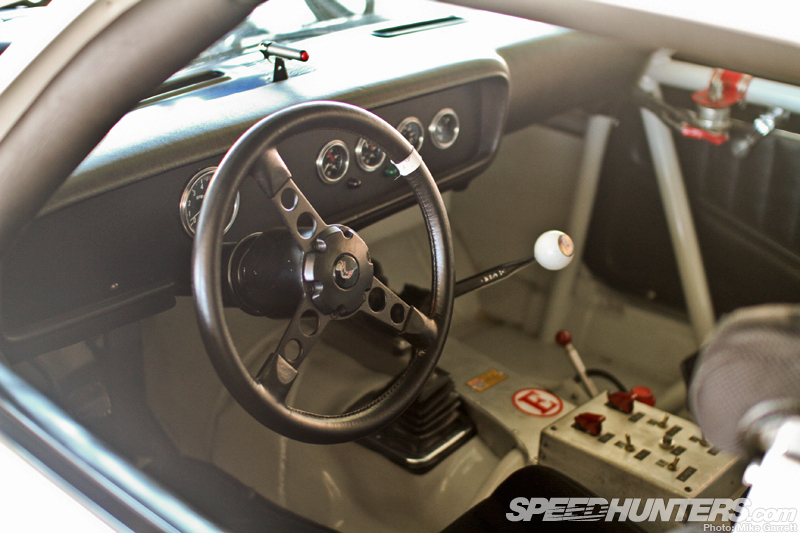
While the cockpit is stripped out as you’d expect, I do like the way the car still uses a factory Pontiac steering wheel. My dad actually has the same wheel in his ’70 GTO, which is how I recognized it so quickly.
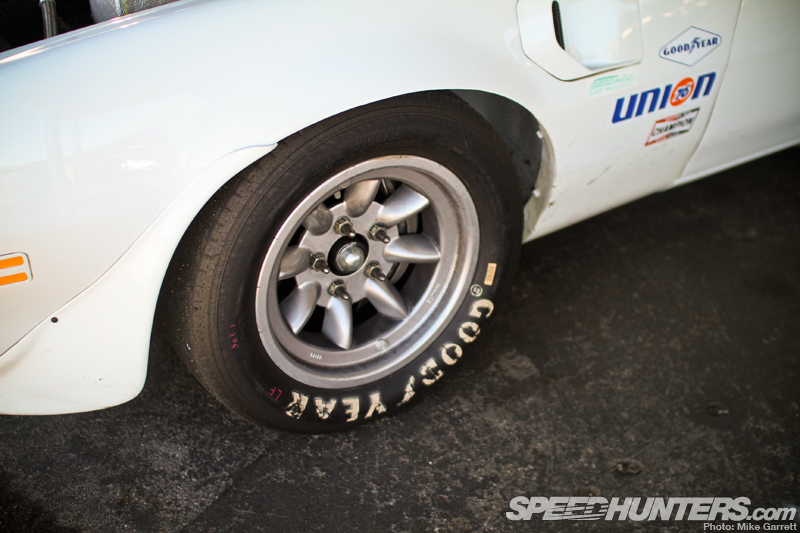
Of course when Pontiac first rolled out the Trans Am in 1969, the SCCA wasn’t happy about having its trademark used for the car’s name so they came to an agreement where GM would pay the SCCA $5 for every Trans Am sold. I wonder how that worked out for them during the height of Burt Reynolds Trans Am mania in the late ’70s?
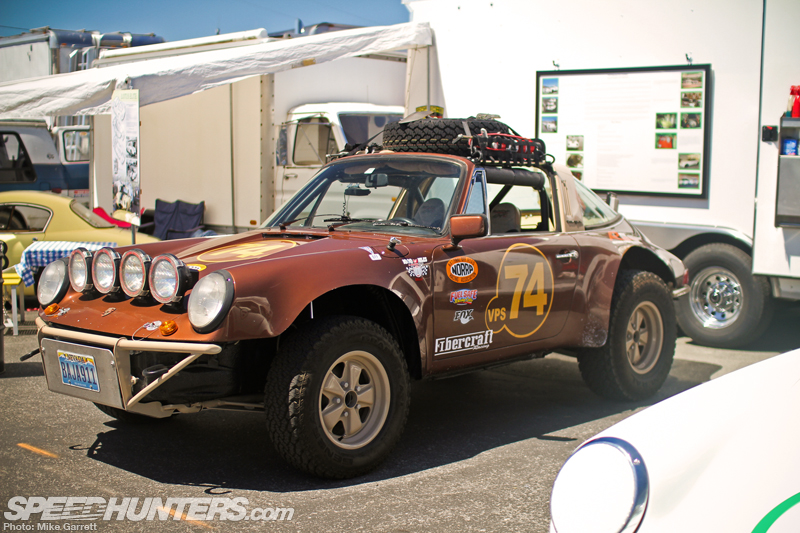
Last but not least, we have car that wasn’t actually participating in the Rolex Historics but was just too neat not to share – a 1974 Porsche ‘Baja 911′ built by a fellow named Ned Bacon (who was campaigning a 911 RSR in the main event).
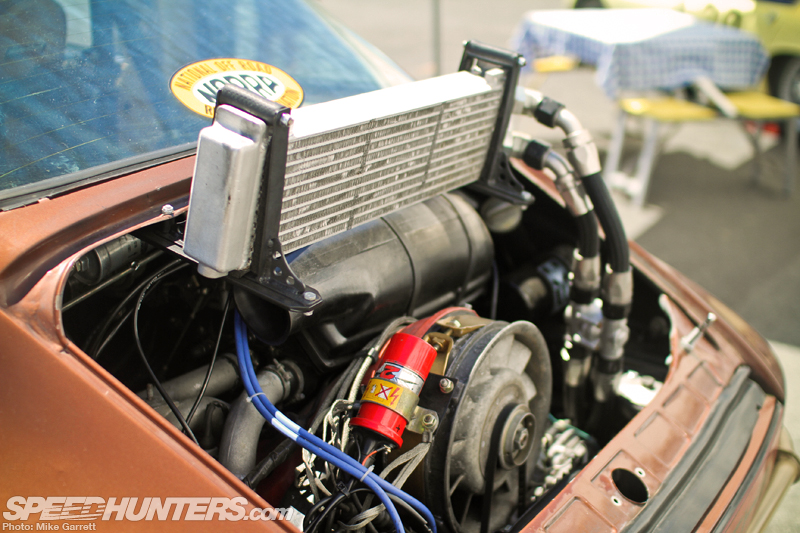
That’s right, a Porsche 911 that’s been modified in the same style that you often see on aircooled Volkswagen Beetles.
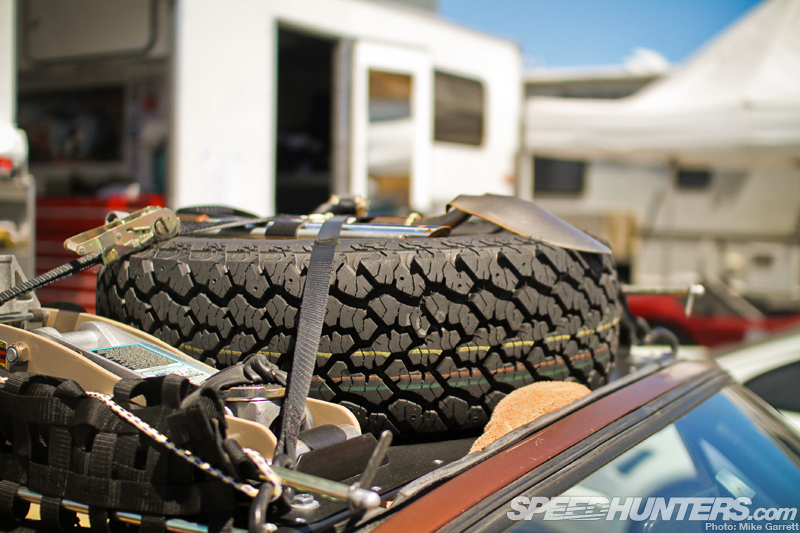
We are talking Fuchs with big knobby tires, tons of suspension travel and everything you’d need to go roaring across the open desert.
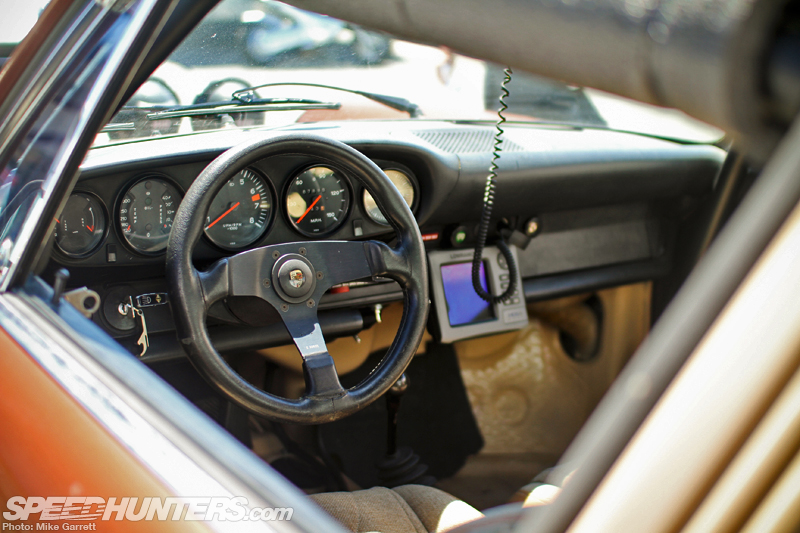
But of course all this stuff isn’t done to the car just to get funny looks. The Porsche is built to be a legit off-road racer, and it ran in this year’s NORRA Mexican 1000 race.
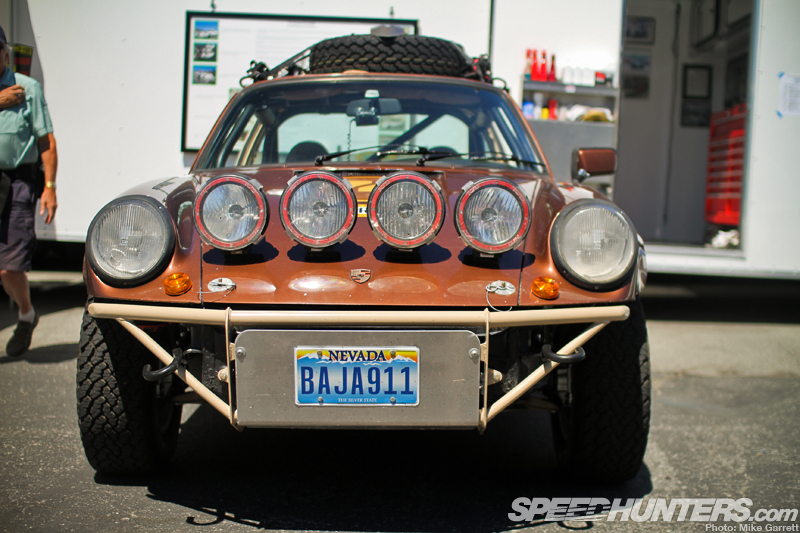
It’s something that you might call sacrilege – if it wasn’t so damn cool.
With that I’ll wrap up my selection of spotlights from the Rolex Monterey Motorsports Reunion. Hope you’ve enjoyed my picks.
Mike Garrett
Instagram: speedhunters_mike
mike@speedhunters.com





